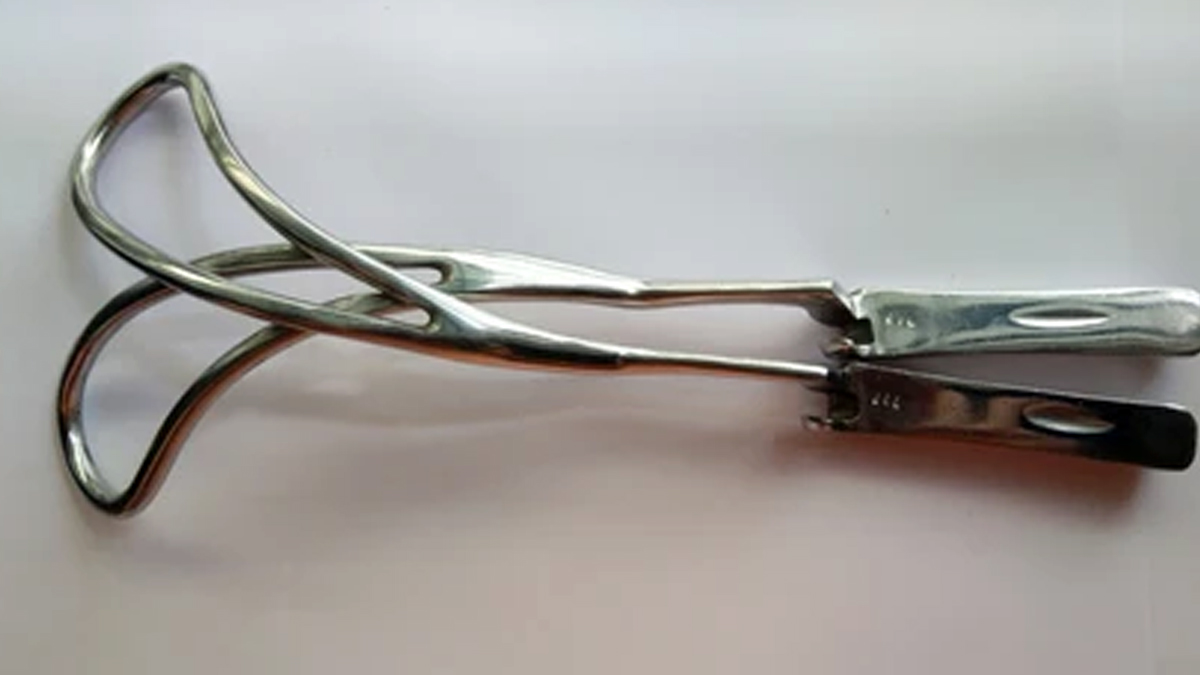
Have you ever wondered what happens when labour doesn't progress as expected? Or how do doctors manage situations where delivery needs a little extra help? In those moments, forceps delivery can be a lifesaver. While cesarean sections and vacuum deliveries are more commonly discussed, forceps, a technique that has been around for centuries still play a crucial role in assisting women through difficult labour. We spoke to our expert Dr Vinoad Bharrati, Obstetrician and Gynaecologist, Director, Elite Momz, unit of Rising Medicare Hospital, Pune, who guides us through this often-overlooked method, explaining how it works, when it's needed, and the benefits it offers for both mothers and babies in specific circumstances.
Table of Content:-

“Forceps have a rich history in obstetrics, once considered a royal treasure. In ancient times, many women lost their lives and babies due to obstructed labour. It was caregivers like Chamberlain who recognised the need for forceps and began using them for the greater good of all women. At a time when cesarean sections were risky, forceps delivery became a breakthrough,” said Dr Bharrati.
In modern obstetrics, however, the use of forceps has declined significantly, with only about 1% of vaginal deliveries involving forceps. While vacuum deliveries are more common, forceps are still more successful in achieving vaginal delivery. Fear of litigation and lack of training have contributed to this decline, but forceps remain an important tool for shortening the second stage of labour.
According to a 2010 study, forceps delivery is a procedure where forceps are inserted into the vagina to gently grasp the baby's head and assist in guiding it through the birth canal.
Forceps may be the preferred method for delivering premature babies due to the higher risk of cephalohematoma and intracranial haemorrhage with vacuum extraction. Additionally, certain medical conditions, such as cardiac, respiratory, and neurological issues, can prevent the necessary maternal effort for successful vacuum extraction during the second stage of labour, as stated in the British Medical Journal (BMJ).
Also Read: Is Your Pregnancy High-Risk? Here’s What You Need to Know for a Healthy Delivery
Indications for Forceps Delivery
Forceps can be used in labour for both maternal and foetal indications:

Maternal Indications:
- Maternal exhaustion
- Cardiac disease
- Epilepsy in maternal side-prolonged second stage
Foetal Indications:
- After coming ahead of the breech
- In preterm as a protective cage
- Foetal distress with the head descending below the ischial spines
The Instrument Set

“The forceps instrument set consists of two blades: left and right, designed for maternal side application. The blades include a handle, lock, shank, and fenestrated blade. There are different types of forceps, such as Kielland, Simpson, and Wrigley’s, each with specific curves: cephalic and pelvic,” said Dr Bharrati.
Types of Forceps Application
The process of using forceps is called a forceps application. Dr Bharrati listed the types of forceps applications as follows:
- Outlet forceps
- Low forceps
- Midcavity forceps
- High forceps
In modern obstetrics, only outlet and low forceps are used and midcavity and high forceps are not used due to the high complication rate.
Also Read: Postpartum Wellness: Expert Explains When To Focus On Weight And Health After Birth
Prerequisites for Forceps Delivery
For a forceps-assisted vaginal delivery, the following prerequisites must be met:

- Informed consent
- Experienced obstetrician
- The cervix should be fully dilated
- Complete empty urinary bladder
- Foetal head visible at introitus
- Adequate pelvis
- Foetal weight estimated before labour
- Known foetal head position
- Readiness for a backup plan if the forceps application fails
Technique For Forceps Delivery
In clinically indicated situations, and when all prerequisites are met, local anaesthesia or epidural anaesthesia is administered. A right mediolateral episiotomy (cut in the perineum) is performed to prevent injury to the anal sphincter.
“The forceps application starts by positioning the left blade along the pelvic curve and the right blade along the cephalic curve. If both blades lock properly, it indicates the correct application. If the blades fail to lock, the procedure should be discontinued. Once both blades are securely applied, the obstetrician applies a pull using the forearm in a downward and outward direction. After the foetal head emerges from the perineum, the blades are unlocked and removed, and the delivery proceeds as per routine protocol,” explained Dr Bharrati.
When to Abandon the Procedure
The procedure should be abandoned in the following situations:
- No descent of the head despite pulling
- Forceps do not lock properly
- The foetal head does not emerge after three pulls
Advantages of Forceps Delivery
There are several advantages to forceps vaginal delivery, including:
- Avoidance of Cesarean Section: Forceps delivery helps avoid the need for a cesarean section.
- Lower Morbidity: Compared to a cesarean, forceps delivery has less morbidity.
- Immediate Mobility: Women can become mobile right after the procedure.
- Less Strain on the Heart: Forceps reduce the load on the heart during the second stage of labour.
- Assisting Exhausted Mothers: It provides relief to mothers who are exhausted or have cardiac/neurological conditions, reducing the duration of the second stage of labour.
- Cost-Effective: Unlike cesarean sections, forceps delivery does not require expensive instruments or electrical equipment.
Risks Involved
Forceps delivery carries some risks, including:
- Maternal perineal injuries
- Excessive bleeding
- Foetal injuries
Also Read: Postpartum Recovery and Beyond: Why 20-Minute Workouts are Ideal for New Mothers?
The Role of Forceps in Modern Obstetrics
“In skilled hands, forceps can be a valuable tool in avoiding cesarean sections, especially in difficult or preterm labour situations. They can also assist in breech deliveries, particularly in the second twin. Failure of forceps is much less as compared to vacuum delivery. The procedure also eliminates the need for maternal effort, offering a safer alternative for exhausted mothers,” said Dr Bharrati.
Institutions that use forceps regularly tend to have lower cesarean section rates, highlighting its potential for preserving vaginal deliveries. Furthermore, the use of forceps offers junior obstetricians an opportunity to learn from experienced practitioners, ensuring this valuable skill is not forgotten.
[Disclaimer: This article contains information provided by an expert and is for informational purposes only. Hence, we advise you to consult your professional if you are dealing with any health issues to avoid complications.]
Also watch this video
How we keep this article up to date:
We work with experts and keep a close eye on the latest in health and wellness. Whenever there is a new research or helpful information, we update our articles with accurate and useful advice.
Current Version
